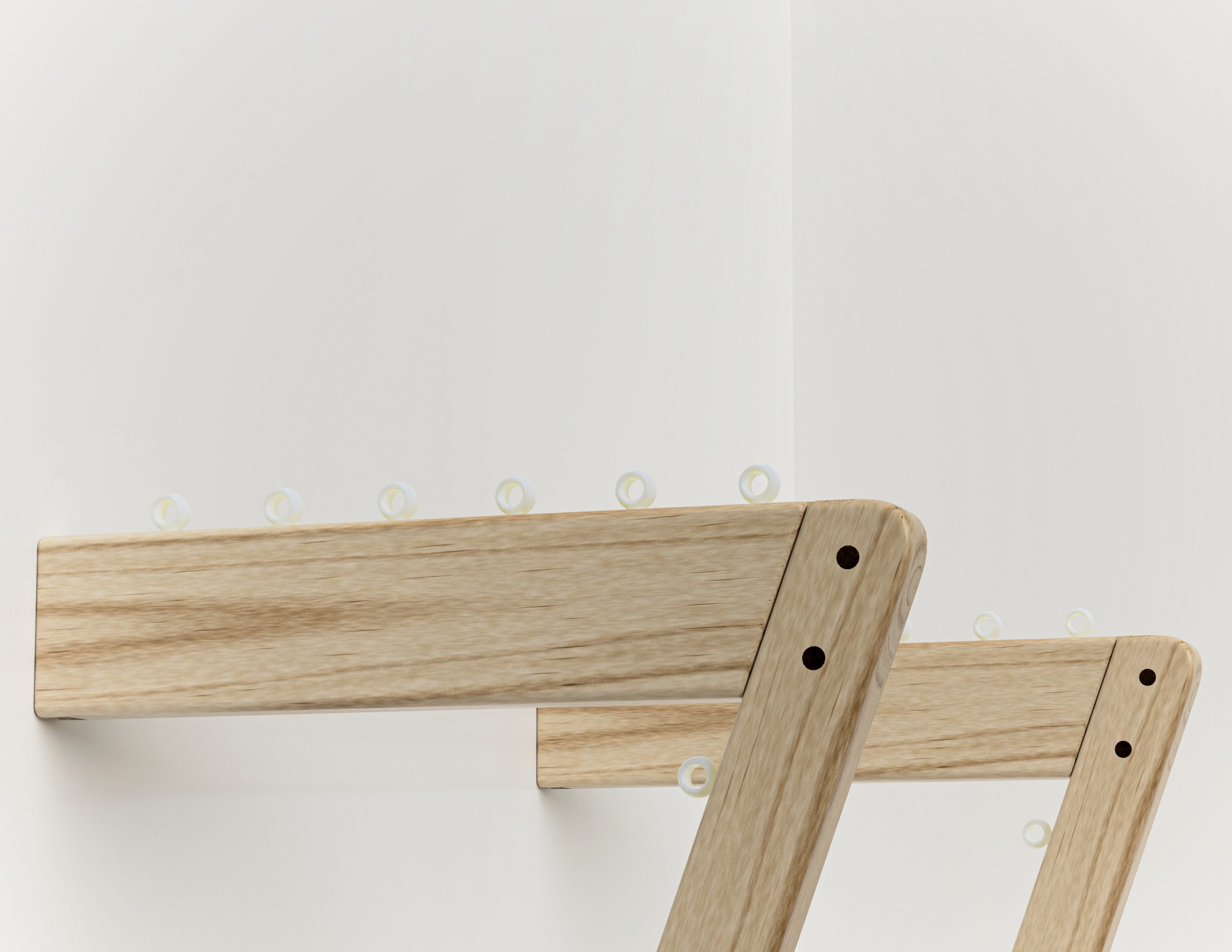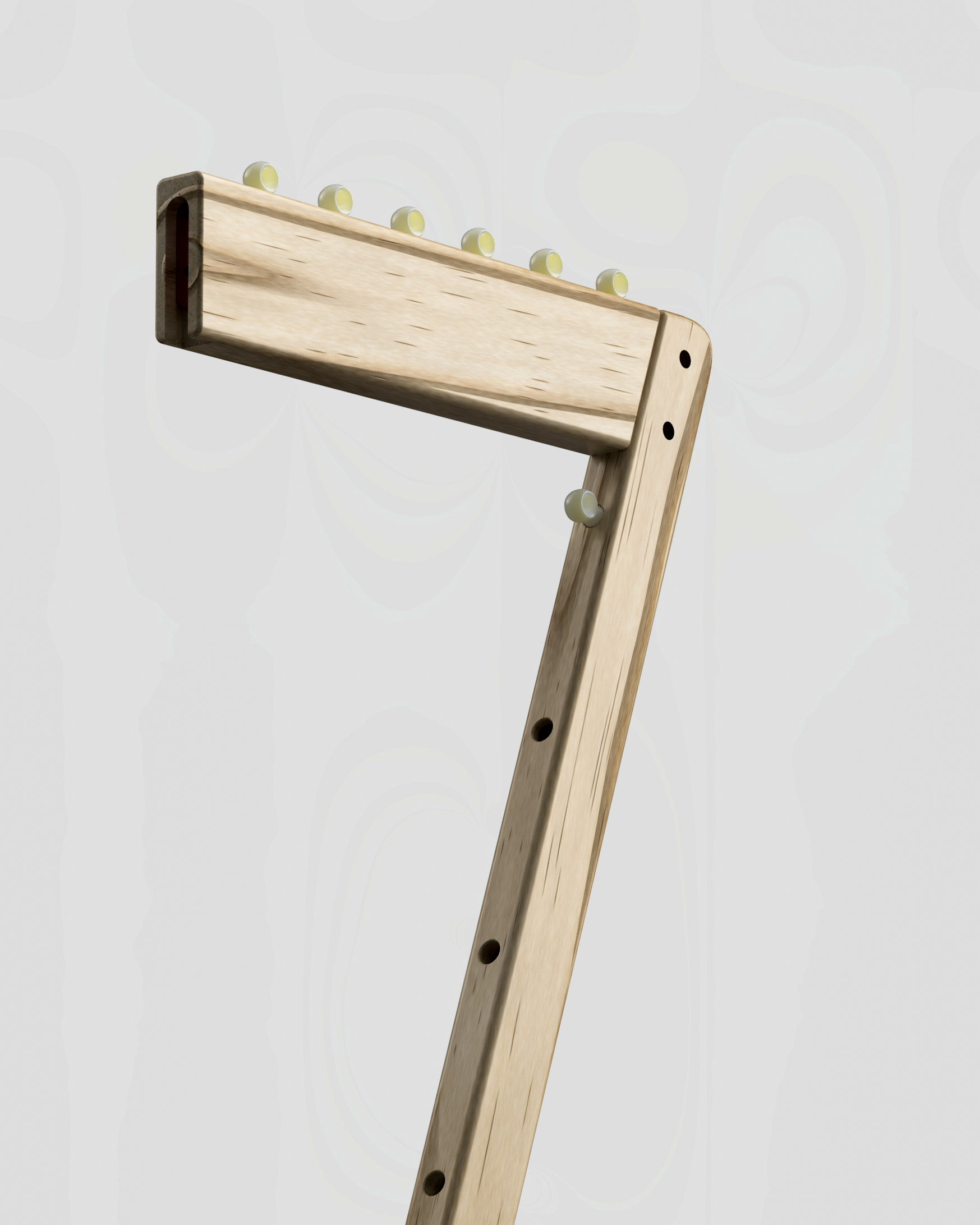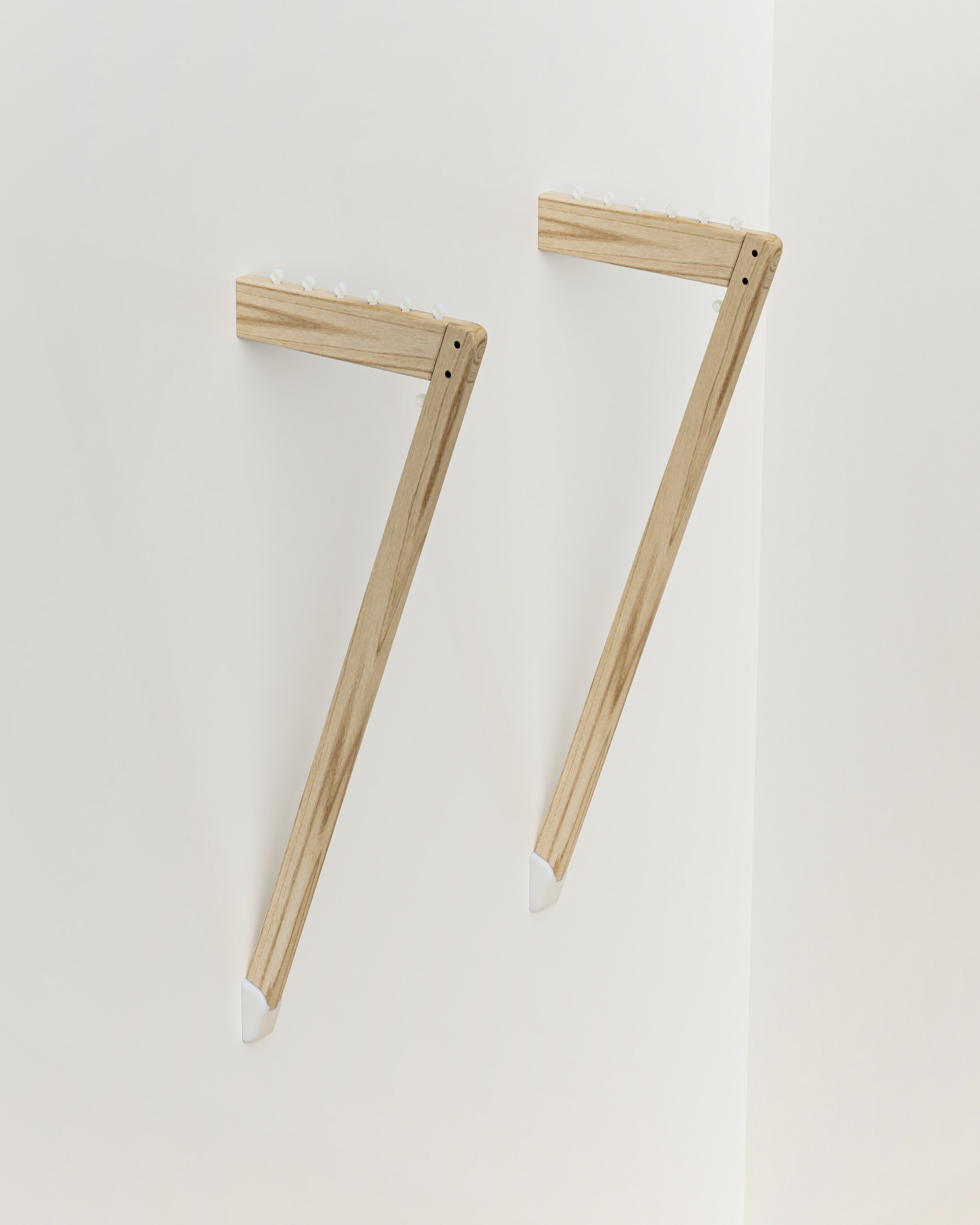


Concept
MultiRack is an adaptable furniture product designed to exemplify the concepts of emotional durability, material reclamation, and individual appropriation.
Development
In my second year of study, I took part in a course aimed at design analysis, sustainable material use, and user analysis. The first part of the course involved selecting an iconic product, and analysing it to inform our own design identity, while also understanding the product’s implications for sustainability.
I selected Peter Opsvik’s Tripp Trapp chair for investigation, as I found Mr. Opsvik’s personal design philosophy, and the chair’s construction to be highly admirable. The iconic Tripp Trapp chair is a terrific example of how emotional durability and thoughtful design can reduce material waste. Mr. Opsvik’s personal thoughts on adaptive design clearly show in the piece, with its adjustable components allowing for the chair to grow with a child through their entire life.
The second part of the study involved implementing the lessons learned from the chosen product into our own design process, in order to develop a product that exemplified our own beliefs. To this end, I designed a modular, wall-mounted furniture system that was partly comprised of reclaimed materials.
Users of this system would purchase a starter kit that included however many “frame sections” they specified, along with mounting hardware, that was made of recycled HDPE. Users would also gain access to an open-source library of printable hardware, that could slot into the mounting points machined into each “frame section”. This allowed users to turn MultiRack into a variety of furniture objects, as they could install shelves, nets, bars, and more onto the frames. The printable hardware was also designed with standard measurements in mind, so users could recycle things like climbing rope for use with the furniture system.
MultiRack was designed with a long life cycle in mind and was intended to give users an emotional connection to the system as they customized it to their own use and modified it as their needs changed.